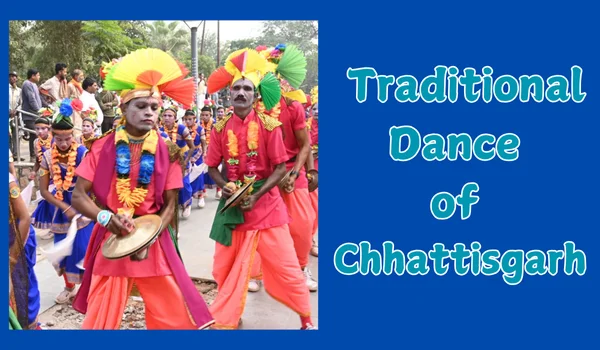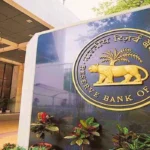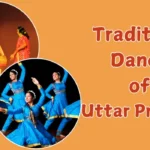Chhattisgarh, known as the “Rice Bowl of India,” is a state in central India with a rich cultural heritage and diverse tribal traditions. The state is home to several indigenous communities, including Gond, Baiga, Muria, and Bison Horn Maria, each with its own distinct dance forms that celebrate life, nature, and traditions.
Traditional dances in Chhattisgarh are performed during harvest festivals, religious celebrations, marriages, and social gatherings. These dances are often accompanied by tribal musical instruments like the Mandar, Dhol, Timki, and Mohri, creating a vibrant and rhythmic performance.
Each dance form reflects the history, customs, and beliefs of the local people, making them an integral part of the state’s cultural identity.
In this article, we will explore the most famous traditional dances of Chhattisgarh, their unique features, and the occasions on which they are performed.
Traditional Dances of Chhattisgarh
| Sl. No. | Dance Name | Performed By | Significance | Occasion |
|---|---|---|---|---|
| 1 | Panthi Dance | Satnami Community | Spiritual dance, devotion to Guru Ghasidas | Maghi Purnima, religious events |
| 2 | Raut Nacha | Yadav (Ahir) Community | Warrior dance, Krishna devotion | Diwali, cultural fairs |
| 3 | Karma Dance | Gond & Oraon Tribes | Worship of the Karma tree, fertility | Karma Puja, harvest season |
| 4 | Saila Dance | Muria Tribe | Stick dance, post-harvest celebrations | Seasonal festivals |
| 5 | Sua Nacha | Women | Parrot dance, marital happiness | Deepawali, Navratri |
| 6 | Gedi Dance | Children & Youth | Stilt dance, celebration of monsoon | Hareli Festival |
| 7 | Mandari Dance | Baiga & Gond Tribes | Ritualistic dance, storytelling | Tribal festivals |
| 8 | Bison Horn Dance | Bison Horn Maria Tribe | Warrior dance, bravery | Dussehra, social gatherings |
| 9 | Dandari Dance | Gond Tribe | Religious and social dance | Weddings, festivals |
| 10 | Bharat Leela | Folk Artists | Folk theatre, storytelling | Cultural festivals |

1. Panthi Dance – The Devotional Dance of Chhattisgarh
Panthi Dance is a spiritual dance of the Satnami community, performed in honor of Guru Ghasidas, the founder of the Satnam Panth movement.
Features of Panthi Dance:
- Performed by men, forming circular or semi-circular formations.
- Involves graceful hand movements, spinning, and synchronized steps.
- Accompanied by soulful devotional songs and traditional musical instruments.
- Symbolizes spirituality, devotion, and the pursuit of truth.
Occasions:
Panthi Dance is performed during Maghi Purnima, Guru Ghasidas Jayanti, and Satnami religious gatherings.
2. Raut Nacha – The Warrior Dance of the Yadav Community
Raut Nacha is a traditional dance of the Yadav (Ahir) community, symbolizing the bravery of Lord Krishna and his Gopas (cowherd friends).
Features of Raut Nacha Dance:
- Performed by men, dressed in traditional dhotis, turbans, and decorative ornaments.
- Includes martial movements, swordplay, and fast footwork.
- Accompanied by Dhol, Timki, and folk songs praising Lord Krishna.
- Represents strength, devotion, and warrior spirit.
Occasions:
Raut Nacha is performed during Diwali, cattle fairs, and rural festivals.
3. Karma Dance – The Worship Dance of Karma Puja
Karma Dance is performed by the Gond and Oraon tribes, dedicated to the Karma tree, which is worshipped for fertility and prosperity.
Features of Karma Dance:
- Performed by both men and women, forming circular patterns.
- Accompanied by Karma songs, Mandar drums, and folk instruments.
- The dance is graceful, involving bending movements and hand claps.
- Symbolizes nature worship, fertility, and tribal unity.
Occasions:
Karma Dance is performed during Karma Puja, harvest festivals, and social gatherings.
4. Saila Dance – The Post-Harvest Stick Dance
Saila Dance is performed by the Muria tribe, using sticks as rhythmic instruments.
Features of Saila Dance:
- Dancers hold sticks, striking them rhythmically while dancing.
- Movements are lively, synchronized, and celebratory.
- Represents the joy of harvest and the strength of the community.
Occasions:
Saila Dance is performed during post-harvest festivals and seasonal celebrations.
5. Sua Nacha – The Parrot Dance of Women
Sua Nacha is a graceful dance performed by women, inspired by the movements of a parrot (Sua).
Features of Sua Nacha Dance:
- Women dance in a circle, clapping and singing folk songs.
- A clay parrot is often placed in the center as a symbol of love and marital happiness.
- The dance represents women’s aspirations, emotions, and social bonding.
Occasions:
Sua Nacha is performed during Diwali, Navratri, and social celebrations.
6. Gedi Dance – The Stilt Dance of Chhattisgarh
Gedi Dance is a unique stilt dance, performed mainly by young boys and men.
Features of Gedi Dance:
- Dancers balance on bamboo stilts, moving skillfully.
- Represents agility, balance, and playfulness.
- Symbolizes rain and fertility.
Occasions:
Gedi Dance is performed during the Hareli Festival (monsoon festival).
7. Mandari Dance – The Storytelling Dance
Mandari Dance is performed by the Baiga and Gond tribes, known for its ritualistic and storytelling elements.
Features of Mandari Dance:
- Slow, rhythmic movements with hand gestures.
- Accompanied by drumming, chanting, and folk storytelling.
- Represents tribal legends and myths.
Occasions:
Mandari Dance is performed during tribal festivals and ceremonies.
8. Bison Horn Dance – The Warrior Dance of the Maria Tribe
Bison Horn Dance is performed by the Bison Horn Maria tribe, known for their warrior traditions.
Features of Bison Horn Dance:
- Dancers wear headgear resembling bison horns.
- The movements include martial stances and jumps.
- Symbolizes bravery and tribal unity.
Occasions:
Bison Horn Dance is performed during Dussehra and community celebrations.
9. Dandari Dance – The Ritual Dance of the Gonds
Dandari Dance is performed by the Gond tribe, showcasing cultural traditions and social bonding.
Features of Dandari Dance:
- Dancers perform coordinated, rhythmic steps.
- Accompanied by folk songs and drumming.
- Represents festivity, togetherness, and cultural identity.
Occasions:
Dandari Dance is performed during weddings, harvest festivals, and village fairs.
10. Bharat Leela – The Folk Theatre Dance
Bharat Leela is a folk theatre dance, combining dance, drama, and storytelling.
Features of Bharat Leela Dance:
- Includes mythological themes, acting, and expressive movements.
- Accompanied by musical instruments like the Dhol and Manjira.
Occasions:
Bharat Leela is performed during cultural and religious festivals.
Conclusion
The traditional dances of Chhattisgarh reflect the joy, faith, and heritage of its people. Whether it is the devotional Panthi, the warrior Raut Nacha, or the playful Gedi Dance, each dance holds a unique place in the state’s culture. These dances continue to be performed, keeping Chhattisgarh’s artistic traditions alive.

